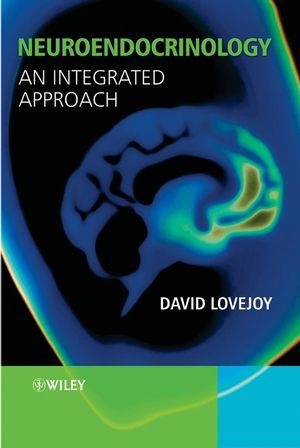Read more
Informationen zum Autor Dr. David. A. Lovejoy , Department of Zoology, University of Toronto, Toronto, Ontario, Canada. Klappentext Neuroendocrinology: An Integrated Approach provides an introduction to neuroendocrinology from a zoological and evolutionary perspective. Clearly structured, the book covers the evolution, development and description of the neuroendocrine system throughout the animal kingdom.Taking a modern approach to the subject, the text opens with a discussion on the history of neuroendocrinology and the structure of early neuroendocrine systems in primitive animals. The evolution of ancestral neuroendocrine systems is then traced to living species. With this background in place, the physiology of the neuroendocrine circuits regulating metabolism, biorhythms, stress and reproduction across the animal kingdom are examined. The book ends with chapters on how the neuroendocrine system is regulated by pheromones and xenobiotics in the environment.This book is an invaluable reference for students taking courses in Neuroendocrinology and Endocrinology as well as those who work in Genomics based drug design and biotech companies based on neurohormones.* An integrated genes-to-environment approach.* Includes profiles sections written by leaders in the field highlighting unusual aspects of neuroendocrine physiology* A unique section on the actions of environmental chemicals in neuroendocrine systems of various species. Zusammenfassung There has been an explosion of interest in the field of neuroendocrinology over the last twenty years with the discovery of neurohormones regulating virtually everything from growth and development to sexual and aggressive behaviour. Inhaltsverzeichnis Foreword. Acknowledgments. 1. History of Neuroendocrinology and Neurohormones Introduction. Early history of physiology. Renaissance and the growth of western science. Scientific revolution. The 19th-century physiology and medicine. Neurosecretion and the hypothalamus--pituitary regulation. Chapter summary. 2. Origin of Life and the First Signalling Molecules. Introduction. Theories of the evolution of the first cells. The first cells. The first true signalling hormones. Chapter summary. 3. Rise of Metazoans and the Elaboration of Signalling Systems. Introduction. Colonialism and multicellularity. The elaboration of hormone pathways Nervous systems and rudimentary neuroendocrine systems. Increase in genetic complexity and the rise of triploblastic organisms. Chapter summary. 4. Elaboration of Neuroendocrine Systems. Introduction. Elaboration of nervous system and development of organismal complexity. Nervous and neuroendocrine systems in phylogenetically younger invertebrates. Nervous and neuroendocrine systems in the deuterostomes. Peripheral and autonomic nervous systems. Blood--brain barriers. Cerebrospinal fluid and the choroid plexus. Neurohaemal and circumventricular organs: Neurovascular interfaces. Hypothalamus--pituitary gland complex. Chapter summary. 5. Neurohormones and Receptors: Structure, Function and Co-evolution. Introduction. Orthology and paralogy. Structural description of non-peptide ligands. Peptide and polypeptide signalling molecules. Structure and classes of receptors. Receptor--ligand interactions. Receptor--ligand co-evolution. Chapter summary. 6. Osmoregulation, Metabolism and Energy Production. Introduction. Osmoregulation. Role of prolactin. Feeding and appetite regulation. Neural circuitry associated with feeding. Chapter summary. 7. Growth and Development. Introd...

